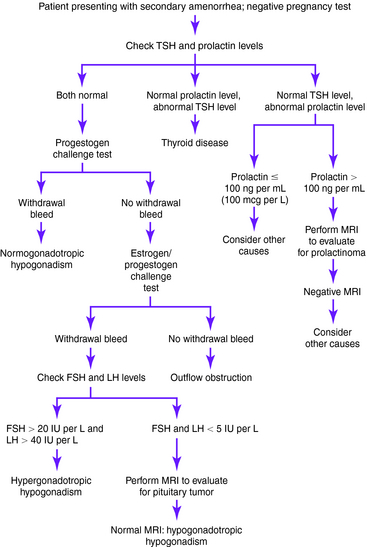Chapter 5 AMENORRHEA: SECONDARY
Secondary amenorrhea is the absence of menses for 3 months in women with previously normal menstruation or for 9 months in women with previous oligomenorrhea. Secondary amenorrhea is more common than primary amenorrhea. The most common cause of secondary amenorrhea is pregnancy. Thyroid disease and hyperprolactinemia are also common causes of secondary amenorrhea.
Once pregnancy, thyroid disease, and hyperprolactinemia are ruled out as potential causes (Fig. 5-1), the remaining causes of secondary amenorrhea are classified as eugonadotropic amenorrhea, hypogonadotropic hypogonadism, and hypergonadotropic hypogonadism. Outflow tract obstruction and hyperandrogenic chronic anovulation are two common causes of eugonadotropic amenorrhea. Polycystic ovary syndrome is the most common cause of hyperandrogenic chronic anovulation.

Figure 5-1. Evaluation of secondary amenorrhea.
(From Master-Hunter T, Heiman DL: Amenorrhea: evaluation and treatment. Am Fam Physician 2006;73:1374-1382.)



